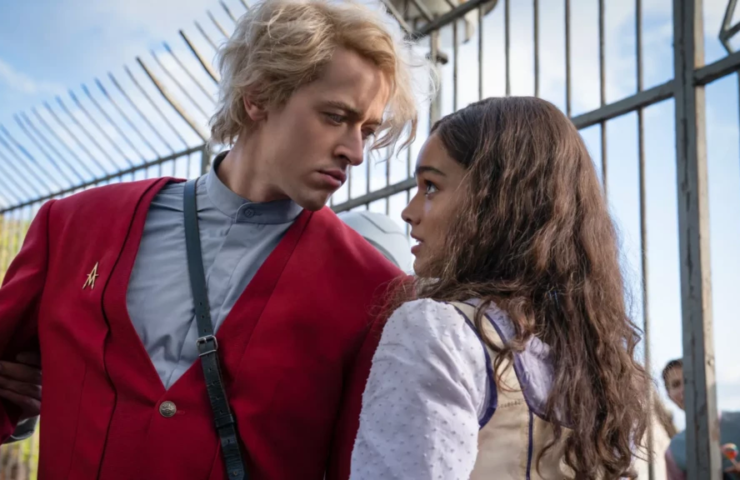With the film adaptation of ‘The Ballad of Songbirds and Snakes’ by Suzanne Collins blowing up the box office since it premiered in theaters, it is only fair to go back and analyze the source material.
Following the success of the original ‘The Hunger Games’ trilogy by Collins came four movies starring the likes of Jennifer Lawrence and Josh Hutcherson and a prequel book centered on Donald Sutherland’s President Snow.
‘The Ballad of Songbirds and Snakes’ is set during the 10th annual Hunger Games, 64 years before readers meet Katniss Everdeen in the first book. In Songbirds and Snakes, we see Coriolanus Snow as an Academy student in the Capitol, mentoring a tribute from District 12, Lucy Gray Baird.
The rest of this article will be going into spoilers for the book, so be sure to read that and come back.
This is the first year the annual Hunger Games will be televised and it is interesting to note all of the differences in technology, style and tradition when compared to Collins’ original trilogy set in the future.
For starters, seeing Capitol children mentor the tributes instead of previous victors is how the reader sees Snow’s perspective of the games in the first place. With it being so early on in the Hunger Games tradition, there are no fancy arenas that change every year, no costumes or parades for the tributes and it is the first year tributes are being put in the spotlight with interviews and sponsors to get them through the newly-televised games.
At this stage in ‘The Hunger Games’ timeline, the public in the districts and even the Capitol are not watching the games. Collins does a good job of exploring the purpose of the games and Snow’s motivations to keep them going in the first three books, but it is so clearly explained in this prequel as well. The reader is able to see how even young Snow has ambitions, sadistic ideas and initiative. He wants the spectacle of the games. He sees a very clear difference between Capitol people and those from the districts.
Highlighting how the aspects of the games we became familiar with in Collins’ previous writing all come back to Snow is such a satisfying moment to really pinpoint how important, yet very evil, his character is. A large part of the games still going on and becoming the spectacle readers know it to be is all because of Snow and his ideas he presents to the current Head Gamemaker, Dr. Volumnia Gaul.
The internal monologue Collins gives such a morally corrupt character is ingenious. If readers expected to see the “corruption” or “slow-burning” of Snow’s bad choices happen, they were very wrong. From page four Snow is already thinking of himself above others and having demented thoughts about the people around him. If anything, Collins makes the argument Snow has always been terrible.
Seeing Snow’s motivations when he was a poor person trying to fit into Capitol culture made for an enlightened look into his character. It was nice to see a more magnified look at that Capitol culture readers didn’t get before this book as well.
The book’s pace was admittedly changed when a large chunk of the beginning focused on the few days the games took place and then immediately jumped to Snow being punished as a Peacekeeper. The reader had enough time to get comfortable in one setting of the novel before jumping to the next, making the second half of the book speed events up.
Admittedly, Snow’s time in District 12 was not as interesting to read as how the games played out, but there are still lots of examples of characterization and how he handles certain situations thrown at him. It is safe to say, this book was never a love story. Plus, readers get a good comparison of morals with how Snow sees things and how Sejanus Plinth sees them.
Collins made the addition of song lyrics sung by Lucy Gray and the Covey a vital part of the prequel as it not only served the plot expedition within but brought out characterizations for Lucy Gray and Snow. The Ballad of Lucy Gray had some of the best-written foreshadowing.
One of the best parts of only seeing the events of ‘The Ballad of Songbirds and Snakes’ through Snow’s point of view is that many questions form in the readers’ minds go unanswered.
Did Lucy Gray really love Snow? Did she disappear or die at the end of the book? Did Gaul really trust him? So many questions and the air of uncertainty the reader gets almost makes reading the book that much more satisfying. These answers aren’t given to the reader on purpose because Snow doesn’t know them himself.
There are many fan theories surrounding the prequel and how it relates to the trilogy, such as if Lucy Gray is an ancestor of Katniss or if Snow put the gate around District 12 to keep Lucy Gray from coming back. Personally, Katniss being a descendant of Muade Ivory would make sense as to how she knows “The Hanging Tree” song.
Overall, while long, Collins had plenty to say with this prequel to ‘The Hunger Games.’ Readers were able to connect the dots to the original material, learn more about the main villain of the series and see the expert worldbuilding of Panem and inside the Capitol.
Now, let’s see a book about Haymitch’s games. It’s not a want, Suzanne, it is a need.





Recent Comments